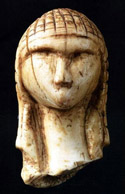Anthropology, Department of
Document Type
Article
Date of this Version
2015
Citation
Published in American Journal of Physical Anthropology 157 (2015), pp. 507–512; doi: 10.1002/ajpa.22721
Abstract
Behavioral ecologists have recently begun using multilevel modeling for the analysis of social behavior. We present a multilevel modeling formulation of the Social Relations Model that is well suited for the analysis of dyadic network data. This model, which we adapt for count data and small datasets, can be fitted using standard multilevel modeling software packages. We illustrate this model with an analysis of meal sharing among Ye’kwana horticulturalists in Venezuela. In this setting, meal sharing among households is predicted by an association index, which reflects the amount of time that members of the households are interacting. This result replicates recent findings that interhousehold food sharing is especially prevalent among households that interact and cooperate in multiple ways. We discuss opportunities for human behavioral ecologists to expand their focus to the multiple currencies and cooperative behaviors that characterize interpersonal relationships in preindustrial societies. We discuss possible extensions to this statistical modeling approach and applications to research by human behavioral ecologists and primatologists.



Comments
Copyright © 2015 Wiley Periodicals, Inc. Used by permission.